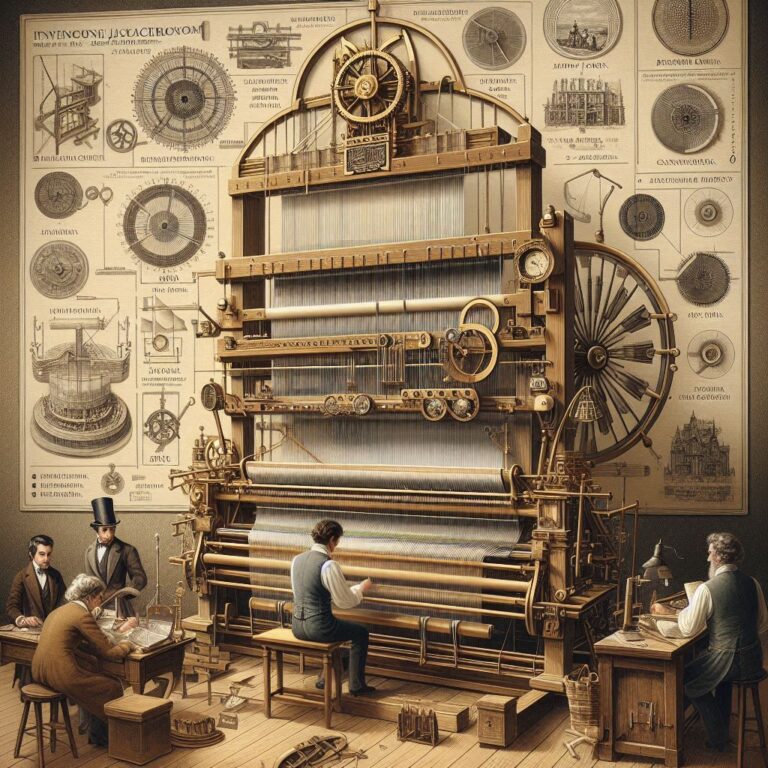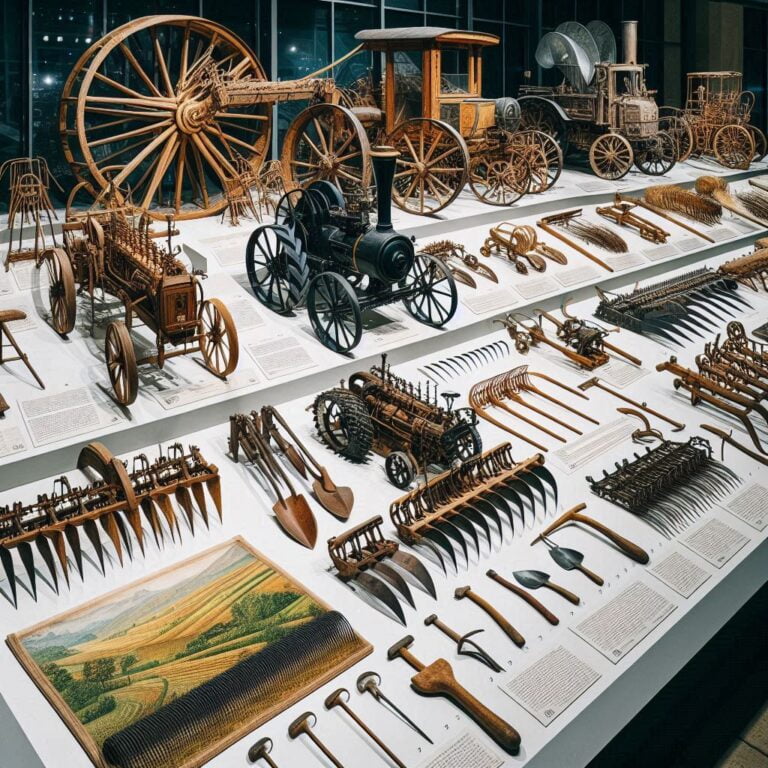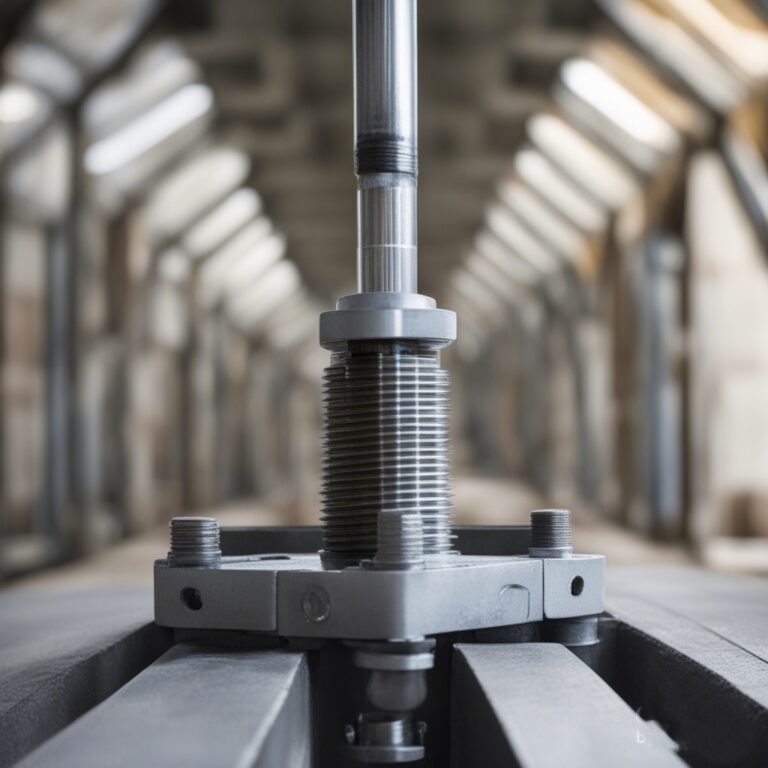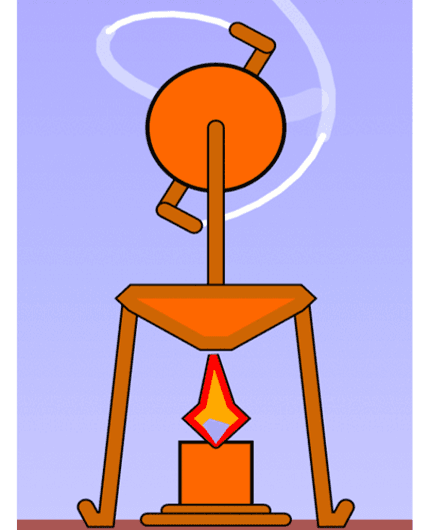 |
| Simple Machines- Lever |
Simple Machine- Lever
Ever wondered how a crowbar effortlessly pries open a jammed door, or how a seesaw balances two people of different weights? The answer lies in the power of levers, one of the most fundamental and versatile simple machines. These ingenious tools have been quietly shaping our world for millennia, from the construction of pyramids to the operation of modern machinery.
In this comprehensive blog, we’ll embark on a captivating exploration of levers, delving into their:
- Core principles: We’ll break down the science behind levers, explaining how they work, the different types, and their mechanical advantage.
- Real-world applications: We’ll showcase how levers are seamlessly integrated into our daily lives, from simple tools like scissors and bottle openers to complex machinery in construction and manufacturing.
- Historical significance: We’ll trace the fascinating journey of levers throughout history, highlighting their role in various civilizations and technological advancements.
Whether you’re a curious student, a DIY enthusiast, or simply someone fascinated by the world around you, this blog is your one-stop resource for understanding levers.
What is Levers: The Basics
In our everyday lives, we often encounter situations where we need to lift, move, or manipulate objects that are heavier or bulkier than we can handle alone. Enter the lever, a fundamental simple machine that has been instrumental in overcoming such challenges for millennia.
But what exactly is a lever?
At its core, a lever is a rigid bar that pivots on a fixed point called the fulcrum. By applying force (effort) on one end of the lever, you can move a load (resistance) on the other end. The key lies in the mechanical advantage provided by the lever, which allows you to exert a smaller force to achieve a greater output force.
Here’s a breakdown of the key components of a lever:
- Fulcrum: The fixed point around which the lever pivots.
- Effort: The force applied to the lever to move the load.
- Load: The resistance or object being moved by the lever.
- Mechanical Advantage: The ratio of the output force (load) to the input force (effort).
The magic of levers lies in their diverse configurations:
- First-class levers: The fulcrum lies between the effort and the load, offering balanced force, like a seesaw.
- Second-class levers: The load is situated between the fulcrum and the effort, amplifying the input force, like a wheelbarrow.
- Third-class levers: The effort is placed between the fulcrum and the load, sacrificing some force for greater control and speed, like a baseball bat.
Beyond mere definitions, levers have a profound impact on our world:
- Simple tools: Levers are the backbone of everyday tools like scissors, crowbars, bottle openers, and nutcrackers.
- Complex machinery: From cranes lifting massive structures to car brakes applying controlled stopping power, levers are essential components in various machines.
 |
| Types of Lever |
To grasp the magic behind levers, we can turn to simple calculations. The mechanical advantage (MA) of a lever is a fundamental concept.
What exactly is meant by “mechanical advantage”? Put simply, a lever is responsible for offering mechanical advantage, which essentially signifies the extent to which a basic machine magnifies a given applied force. The arrangement of the fulcrum, effort, and load within the lever structure decides both the lever type and the level of mechanical advantage inherent in the device. It’s important to note that the distance between the effort and the fulcrum plays a significant role: the greater this distance, the smoother the movement of the load becomes.
If you’re aiming to quantify mechanical advantage, you can employ the following formula:
MA=Load÷Effort=Distance from Load to Fulcrum÷Distance from Effort to Fulcrum
Types of Levers
First Class Lever: Balanced Brilliance
Imagine a seesaw in a playground. This is a classic example of a first class lever, where the fulcrum sits between the effort and the load. When one side is pushed down (effort), the other side rises with the person on it (load). Tools like scissors and pliers also fall into this category, showing the incredible balance levers can achieve.
 |
| Seesaw |
Let’s calculate the mechanical advantage with a numerical example. Suppose we have a first-class lever where the load is 20 kg and the effort applied is 5 kg. Applying the formula, we find:
MA=20 Kg÷5 Kg=4
This reveals that the lever provides a mechanical advantage of 4, making lifting the load four times easier than directly applying force.
Second Class Levers: Lifting with Ease
Ever used a wheelbarrow to carry heavy loads? You’re experiencing a second class lever in action. In this type, the load is situated between the fulcrum and the effort. As you push the handles downward (effort), the load at the front of the wheelbarrow rises effortlessly. This mechanism is a testament to the leverage advantage of this configuration.
 |
| Wheelbarrow |
Let’s calculate the mechanical advantage for a hypothetical wheelbarrow scenario. If the load is 100 kg and the effort applied is 20 kg, the mechanical advantage is:
MA=100 Kg÷20 Kg=5
This calculation underscores how second-class levers multiply the applied force to lift substantial loads with ease.
Third Class Levers: Precision and Power
In the third class lever, the effort is in between the fulcrum and the load. Think of using a broom to sweep. Your hand (effort) grips the broom, and the bristles exert force on the surface (load). While these levers don’t provide as much mechanical advantage as the other types, they are crucial in scenarios requiring precise control, such as in sports equipment like baseball bats.
 |
| Baseball and bat |
Calculating the mechanical advantage for a third-class lever, let’s assume the load is 5 kg and the effort applied is 2 kg:
MA=5 Kg÷2 Kg=2.5
This calculation showcases how third-class levers allow for precision and control by providing a mechanical advantage slightly above 2.
Everyday Applications: Levers in Action
- Nutcrackers: When cracking open nuts during the holidays, you’re relying on a first-class lever to exert force and open the shells.
- Crowbars: Whether you’re prying open a crate or loosening a nail, a crowbar’s first-class lever design magnifies your force.
- Wheelbarrows: The second-class lever in wheelbarrows helps us carry heavy loads with minimal effort, showcasing their practicality in construction and gardening.
- Baseball Bats: Swinging a baseball bat demonstrates the efficiency of third-class levers, enabling precise and powerful hits.
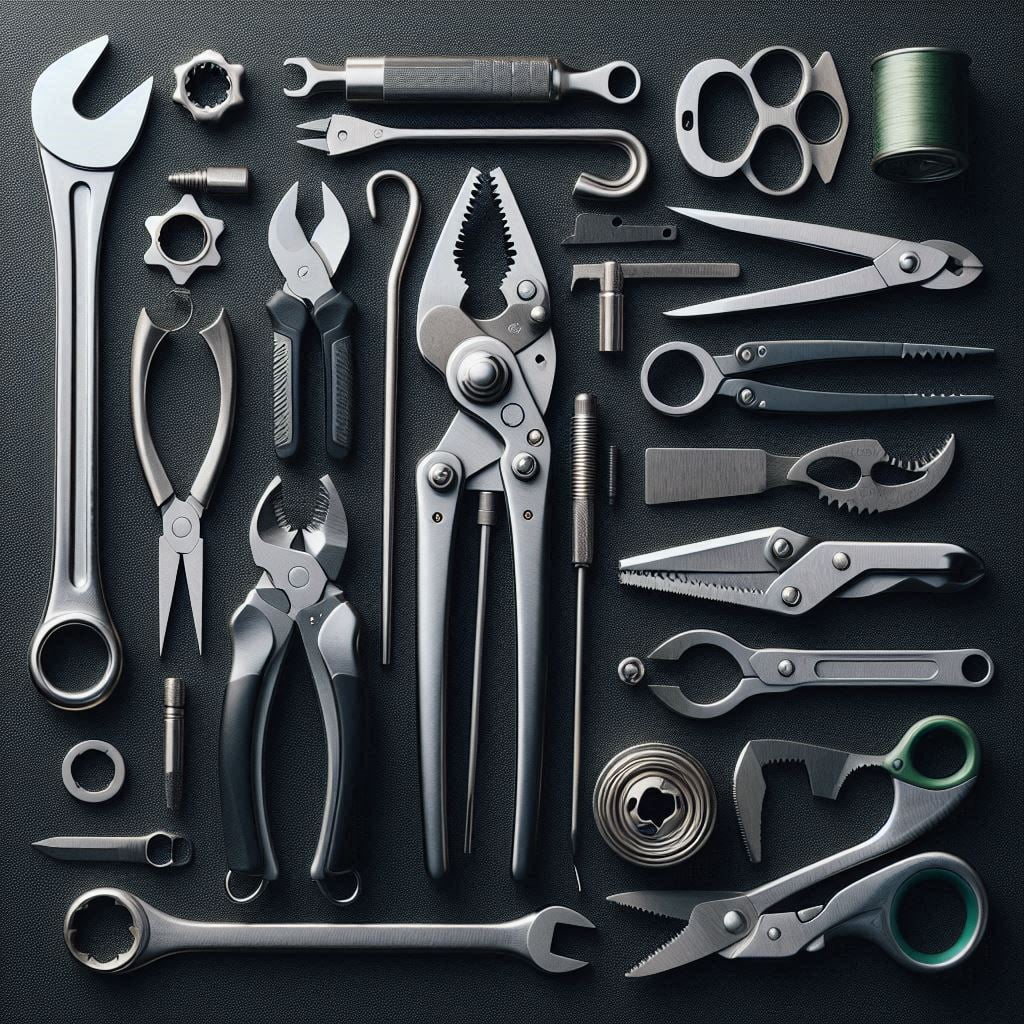
The lever, a seemingly simple tool, boasts a rich and fascinating history that spans millennia. Its journey intertwines with the evolution of human civilization, playing a pivotal role in construction, engineering, and everyday tasks. Here’s a detailed timeline exploring the key milestones in the lever’s remarkable story:
Timeline of Lever
Prehistoric Era (c. 10,000 BC):
While the exact origin of the lever remains shrouded in the mists of time, archaeological evidence suggests that prehistoric humans were likely the first to harness its power for basic tasks around 10,000 BC. The intuitive nature of the lever, requiring minimal understanding of complex mechanics, makes it plausible that various cultures independently discovered its applications.
Here’s a deeper exploration of the potential early uses of levers in the prehistoric era:
- Prying open shells: Imagine early humans struggling to access the nutritious meat inside tough shells. A simple stick acting as a lever, perhaps wedged against a rock as a fulcrum, could have provided the necessary mechanical advantage to pry open the shell, granting access to valuable food.
- Digging tools: Early tools like digging sticks, essentially pointed branches, could have functioned as rudimentary levers. By pushing down on the far end of the stick (effort) while placing the pointed end in the ground (fulcrum), individuals could exert greater force to break through tough soil and create planting pits.
- Moving heavy objects: Large stones served various purposes in prehistoric societies, from building shelters to crafting tools. Utilizing natural levers like inclined planes or logs as fulcrums, groups of individuals could have collectively moved these heavy objects over short distances.
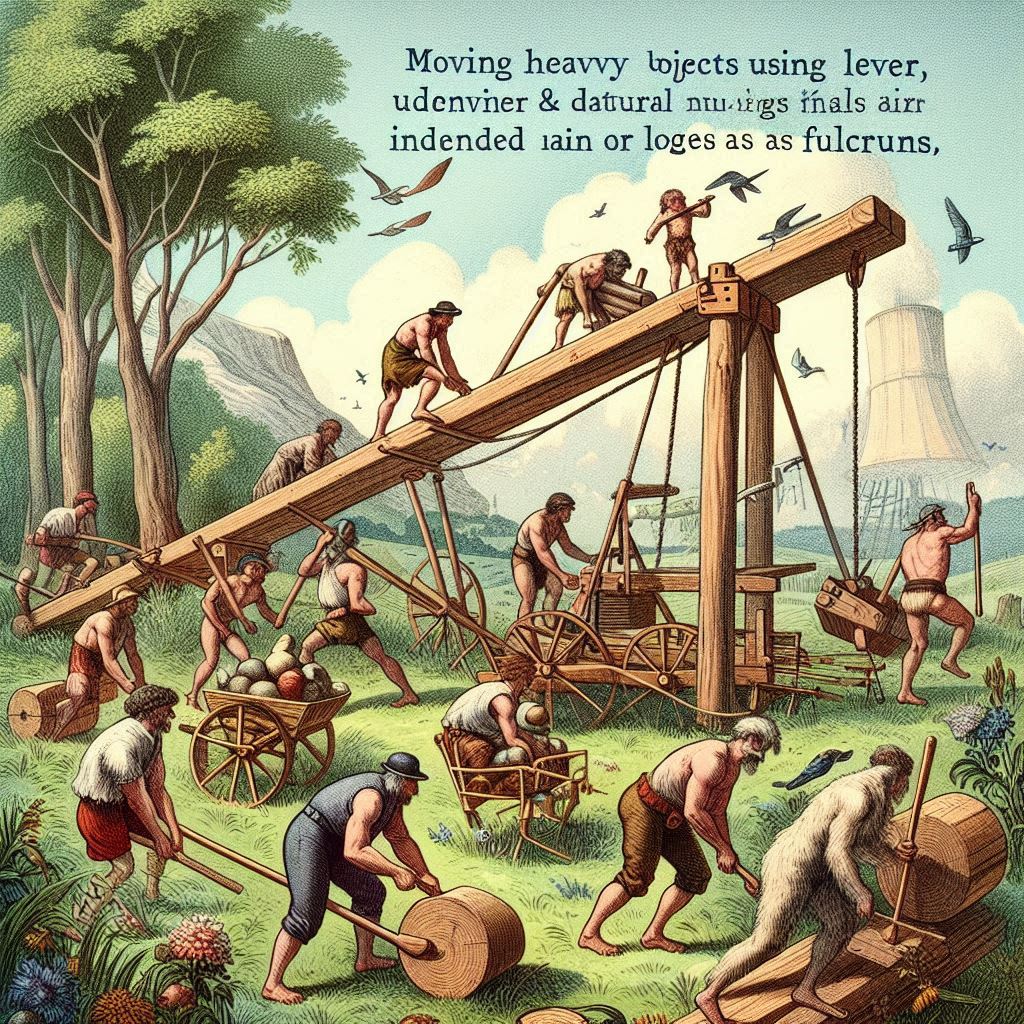
Lesser-known facts:
- Recent studies on chimpanzees using sticks to extract termites from their mounds suggest that tool use similar to levers might have predated even Homo sapiens.
- Some anthropologists theorize that the development of levers might be linked to the evolution of throwing spears. The throwing motion itself involves a lever action, transferring the force generated in the body to the spear for greater propulsion.
Historical references:
While direct evidence from the prehistoric era is scarce, cave paintings and archaeological finds offer clues about early tool use. Additionally, studies of traditional cultures living in remote areas today sometimes reveal practices that echo these prehistoric applications of levers.
3000 BC – 1000 AD: The Lever as a Cornerstone of Ancient Civilizations
The period between 3000 BC and 1000 AD witnessed the lever’s rise as a cornerstone of construction and engineering in some of the most influential civilizations of the time. Let’s delve deeper into the specific contributions of each civilization:
Mesopotamia (c. 4500 BC – 539 BC):
- The Shaduf: This ingenious lever-operated water-lifting device revolutionized irrigation in Mesopotamia’s arid regions. The shaduf consisted of a long pole pivoted on a fulcrum, with a bucket on one end and a counterweight on the other. By applying a small downward force on the weighted end, farmers could effortlessly lift water from wells and canals, enabling them to cultivate crops in previously barren lands. This invention significantly increased agricultural productivity, contributing to the flourishing of Mesopotamian civilizations

Egypt (c. 3100 BC – 30 BC):
- Building the Pyramids: The Egyptians employed levers extensively in constructing their awe-inspiring pyramids. While the exact mechanisms used remain debated, evidence suggests they likely utilized large wooden levers in combination with rollers and ramps to move massive stone blocks. Historians believe Egyptians might have also used levers integrated into scaffolding structures to elevate these blocks to higher levels. The sheer scale and precision of these pyramid constructions stand as a testament to the Egyptians’ mastery of leverage principles.

Lesser-Known Fact:
Some scholars theorize that Egyptians might have used water-filled counterweights on their levers to amplify their mechanical advantage further, allowing them to move even heavier stones with minimal effort.
China (c. 1600 BC – 1912 AD):
- Diverse Applications: The Chinese embraced the lever’s versatility, incorporating it into various aspects of their civilization:
- Irrigation: Similar to the shaduf, the Chinese employed lever-operated waterwheels to lift water from rivers and canals for irrigation purposes.
- Warfare: The throwing arm catapults used by the Chinese armies during the Warring States period (475-221 BC) employed levers to launch projectiles over long distances, showcasing their understanding of leverage in warfare.
- Construction: The lever principle likely played a role in constructing the Great Wall of China, one of the largest construction projects in human history. While detailed records are scarce, historians believe levers might have been used for tasks like lifting heavy stones and transporting materials.
Lesser-Known Fact:
The Chinese text “Mozi” (c. 4th century BC) contains one of the earliest known written discussions on levers, demonstrating the Chinese understanding of their theoretical and practical applications.
References-
Mesopotamia:
- Dalley, Stephanie: “Mesopotamia: The Birthplace of Civilization” (2009). This book provides a comprehensive overview of Mesopotamian society, including their technological advancements and agricultural practices.
- Salzman, Philip C.: “Engineering in Ancient Mesopotamia” (2000). This book delves deeper into the engineering feats of the Mesopotamian civilizations, including the use of levers in irrigation systems like the shaduf.
Egypt:
- Verhoeven, Mark: “Lifting Heavy Objects in Ancient Egypt” (2007). This article specifically explores different theories and evidence regarding the use of levers by the Egyptians in constructing their monumental structures.
China:
- Sun, E-tu Zen: “A History of Ancient Chinese Science and Technology” (1954). This book offers a concise overview of the scientific and technological achievements of ancient China, including their understanding of levers as mentioned in the text “Mozi.”
5th Century BC – 3rd Century AD:
The period between the 5th century BC and the 3rd century AD witnessed a significant shift in the understanding of levers, transitioning from practical application to the development of theoretical foundations. This era saw the emergence of brilliant minds like Archimedes, who laid the groundwork for our modern understanding of these simple machines.

Archimedes and the Birth of Lever Theory:
- Formalizing the Fulcrum: Prior to Archimedes, the concept of the fulcrum, the pivot point of a lever, existed intuitively but lacked a formal definition. Archimedes, through his meticulous observations and experiments, defined the fulcrum as the fixed point around which a lever rotates. This fundamental concept became the cornerstone for further theoretical analysis of levers.
- The Principle of Moments: Archimedes established the principle of moments, a crucial principle governing lever mechanics. This principle states that the product of the force applied (effort) and its distance from the fulcrum (moment of effort) is equal to the product of the load (resistance) and its distance from the fulcrum (moment of load). This principle mathematically explains how the mechanical advantage of a lever is determined, allowing for the calculation of the force required to move a specific load.
Historical References:
- Archimedes’ “On Balances”: This lost treatise, known only through fragments and references in other works, is believed to have laid out Archimedes’ groundbreaking ideas on levers and the principle of moments.
- Plutarch’s “Life of Marcellus”: This biography mentions Archimedes’ use of levers and compound pulleys to defend Syracuse against Roman siege engines, showcasing the practical applications of his theoretical knowledge.
Lesser-Known Facts:
- Archimedes’ Screw: While not directly related to levers, Archimedes’ invention of the screw pump demonstrates his understanding of mechanical principles and his ability to translate theoretical knowledge into practical applications.
- Antikythera Mechanism: This complex astronomical calculator, dating back to the 1st century BC, employed levers and gears to simulate celestial movements. This discovery suggests that the practical understanding of levers extended beyond Archimedes and was potentially incorporated into sophisticated mechanisms during this era.
Beyond Archimedes:
While Archimedes stands as the most prominent figure in the theoretical development of levers during this period, it’s important to acknowledge the contributions of other scholars and civilizations:
- Heron of Alexandria: This 1st-century AD engineer and mathematician further explored the applications of levers in his writings, including their use in various machines and devices.
- The Roman Empire: Roman engineers likely adopted and adapted lever technology from conquered civilizations, incorporating them into their extensive infrastructure projects like aqueducts and bridges.
The Impact of Theoretical Foundations:
The establishment of theoretical principles by Archimedes and others marked a significant turning point in the understanding of levers. This shift from purely practical knowledge to a more scientific approach paved the way for further advancements in lever technology and its integration into various fields. The theoretical framework laid during this period continues to be the foundation for our modern understanding and application of levers in diverse areas of science, engineering, and everyday life.
Further Studies:
- “A History of Greek Mathematics” by Carl Boyer (2010)
- “Mechanics” by Samuel D. Roscoe (1878)
- “The Antikythera Mechanism: Decoding the World’s First Computer” by Tony Freeborn (2013)
14th – 19th Centuries:
The period between the 5th century BC and the 19th century witnessed a flourishing of lever-based innovations, significantly impacting various aspects of life during the Medieval and Industrial eras. Let’s delve deeper into some key inventions and their historical significance:
The Wheelbarrow:
- Emergence: The exact origin of the wheelbarrow remains unclear, with evidence suggesting its existence in China as early as the 2nd century BC. However, its widespread adoption and refinement occurred during the Early Middle Ages (5th-10th centuries AD) in Europe.
- Impact: The wheelbarrow revolutionized the transportation of goods, particularly in construction and agriculture. By distributing the weight of the load between the wheel and the user’s hands, it reduced physical strain and enabled individuals to carry heavier loads over longer distances. This innovation significantly improved efficiency in various industries, contributing to economic growth and development.
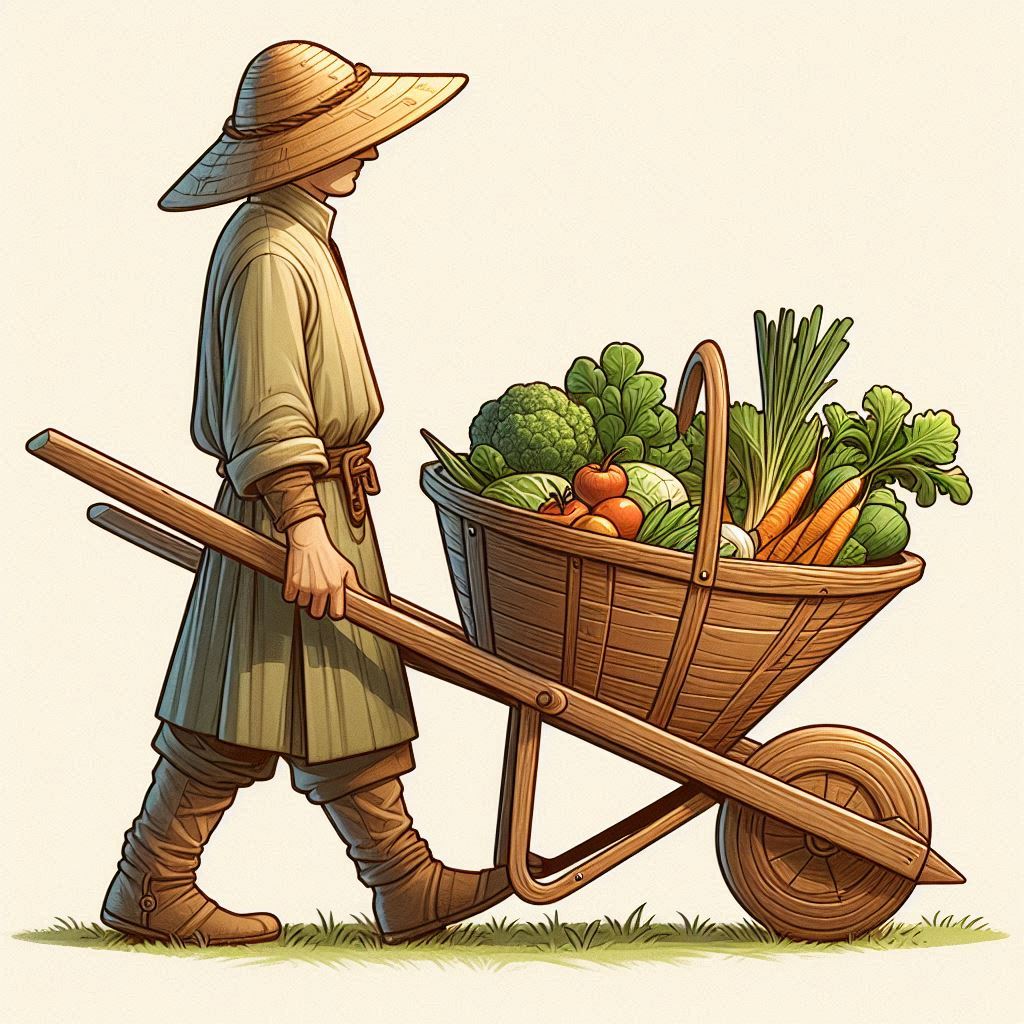
Historical Reference:
- Theophilus Presbyter: His 12th-century treatise, “Schedula Diversarum Artium,” provides one of the earliest detailed descriptions of the wheelbarrow’s construction and its various applications.
The Printing Press:
- Invention: Invented by Johannes Gutenberg in the mid-15th century, the printing press marked a watershed moment in human history. This ingenious device utilized a system of levers and screws to apply pressure and transfer ink from movable type onto paper, enabling mass production of printed materials.
- Significance: The printing press revolutionized the dissemination of knowledge and information. Books, pamphlets, and other printed materials became readily available, fostering literacy, education, and the spread of ideas. This invention played a pivotal role in the Renaissance and beyond, shaping cultural and intellectual landscapes.
Lesser-Known Fact:
- Early printing presses employed a complex combination of levers and cams to achieve the precise and controlled movement necessary for high-quality printing.
Trip Hammers:
- Development: Trip hammers emerged during the Middle Ages, likely originating in Europe around the 11th century. These lever-operated hammers were powered by waterwheels or windmills, utilizing cams and levers to deliver powerful and repetitive blows to metalwork pieces.
- Applications: Trip hammers revolutionized metalworking, enabling efficient shaping and forging of various metals like iron and steel. This innovation played a crucial role in manufacturing tools, weapons, armor, and other metal goods, contributing to advancements in various sectors like construction, shipbuilding, and warfare.
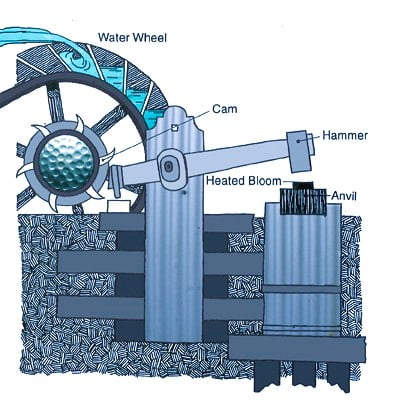
Study Reference:
- Unger, J. R.: “The History of the Trip Hammer” (1903). This study provides a detailed analysis of the development and impact of trip hammers in various historical contexts.
Beyond these specific examples, the Medieval and Industrial eras witnessed numerous other lever-based inventions:
- Scissors: The familiar lever principle is at the heart of this simple yet essential tool, allowing for efficient cutting of various materials.
- Nutcrackers: This tool utilizes the lever principle to crack open hard-shelled nuts with minimal effort.
- Cranes: These large-scale machines employ levers and other simple machines to lift and move heavy objects, playing a crucial role in construction projects and various industries.
19th Century – Present:
The 19th century marked a turning point in human history, ushering in the Industrial Revolution and a surge in technological advancements. Levers, far from being relegated to the past, played a crucial role in this transformation and continue to shape our world today.
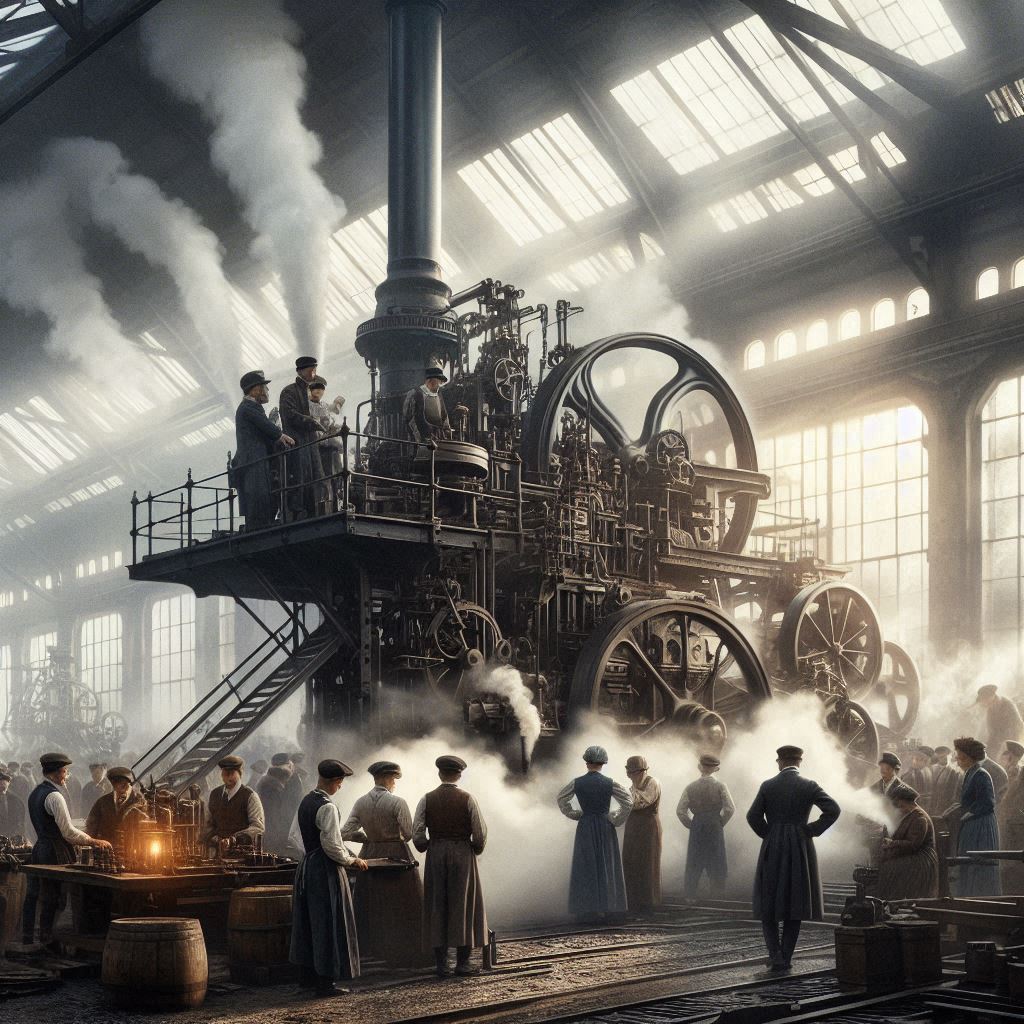
Industrial Revolution and Beyond:
Factory Machines:
Levers became instrumental in automating tasks and increasing production efficiency in factories. From operating looms in textile mills to powering presses in metalworking, levers facilitated the mass production of goods, revolutionizing various industries.
Steam Engines:
The steam engine, the driving force of the Industrial Revolution, relied heavily on levers for its operation. Levers were used to convert the reciprocating motion of pistons into rotary motion, enabling the steam engine to power various machinery.
Lesser-Known Fact:
The Watt steam engine, a pivotal invention of the Industrial Revolution, employed a complex system of levers and linkages to regulate steam flow and optimize engine performance.
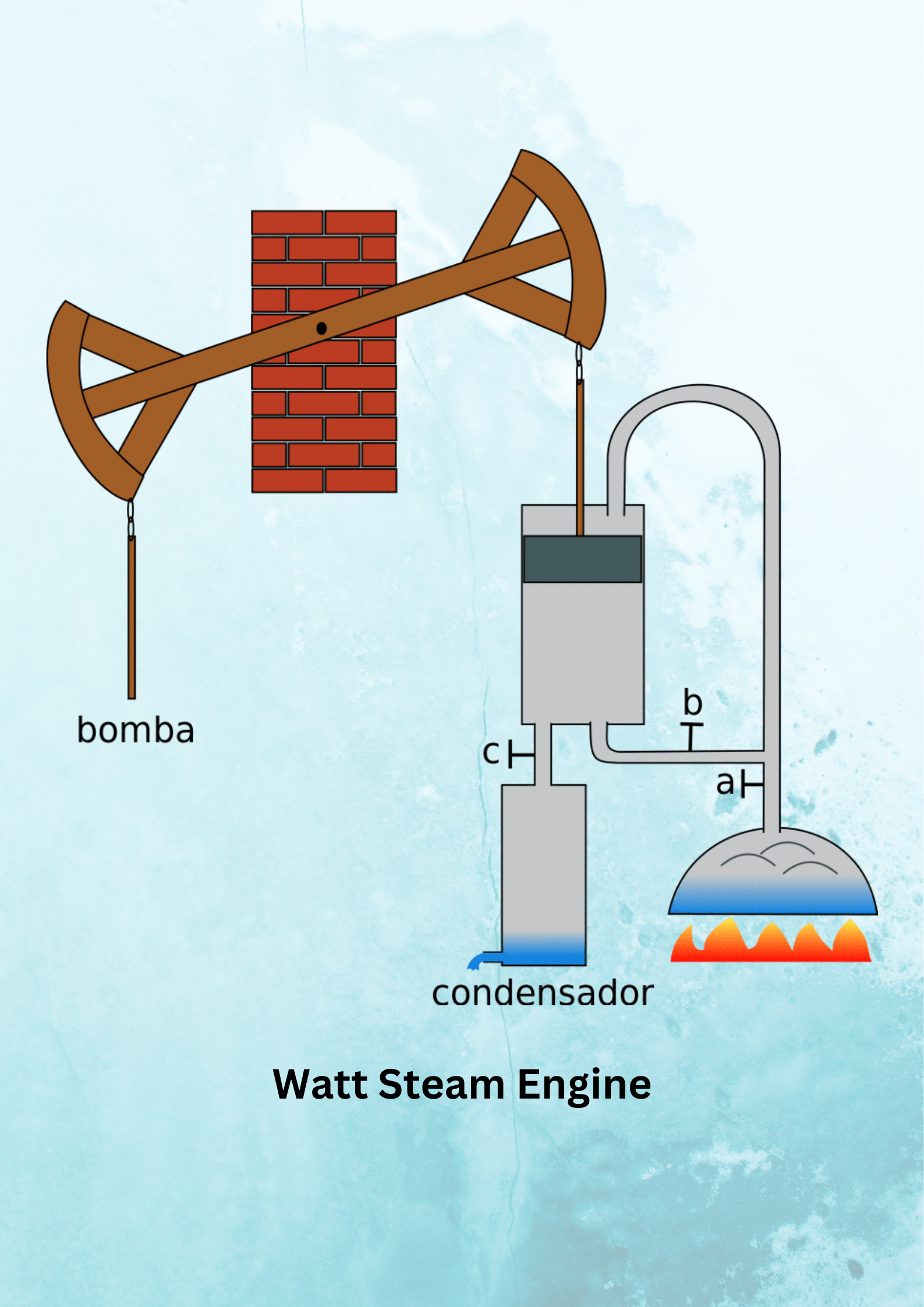
Construction Projects:
Construction projects throughout history have utilized levers for various purposes, from lifting heavy materials like stones and beams to operating machinery like cranes and hoists. The construction of iconic structures like the Eiffel Tower and the Brooklyn Bridge relied on the efficient application of levers.
Modern Applications:
The versatility of levers extends far beyond the industrial age. They continue to be essential components in various aspects of our modern lives:
- Simple Tools: Everyday tools like crowbars, scissors, bottle openers, and nutcrackers all utilize the principles of levers to multiply force and make tasks easier.
- Complex Machinery: Levers are crucial components in a wide range of complex machines, including:
- Robots: Industrial robots and surgical robots employ levers for precise movement and manipulation of objects.
- Spacecraft: Levers play a role in deploying landing gear, manipulating robotic arms, and controlling various spacecraft functions.
- Car Brakes: The braking system in cars utilizes a combination of levers and hydraulics to amplify the driver’s foot pressure and effectively stop the vehicle.
Beyond these key applications, the history of the lever is filled with fascinating stories and lesser-known facts:
- Leonardo da Vinci: The renowned inventor, Leonardo da Vinci, sketched numerous lever-based designs in his notebooks, showcasing his understanding of their principles and potential applications. These sketches, while not always practical, demonstrate his fascination with the lever’s potential and his innovative spirit.
- The Antikythera Mechanism: This ancient Greek astronomical calculator, dating back to the 1st century BC, employed a complex system of levers and gears to simulate celestial movements. This remarkable invention, discovered in a shipwreck, is a testament to ancient civilizations’ ingenuity in utilizing levers for scientific purposes.
The timeline of the lever highlights its enduring legacy and continuous relevance. From the ingenuity of ancient civilizations to the innovations of modern times, the lever continues to shape our world, serving as a testament to the power of simple machines in transforming human endeavors.
Unlocking the Potential: Lever Advantages
Levers have not only revolutionized manual labor but have also inspired complex engineering marvels. In construction, cranes utilize lever systems to lift massive loads with precision. Clock mechanisms incorporate levers for accurate timekeeping, while modern manufacturing relies on these machines for efficiency.
Conclusion:
As we navigate the intricacies of modern technology, it’s important to appreciate the building blocks that brought us here. Levers, with their elegance and efficiency, remind us that brilliance often lies in simplicity. So, the next time you encounter a lever in action, whether in everyday tasks or complex machinery, you’ll recognize the profound impact these unassuming devices have on our lives. Embrace the world of levers, where a small pivot can lead to monumental results.
Also, Check out interesting blogs-



